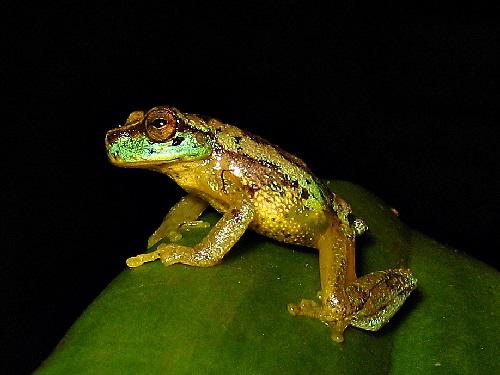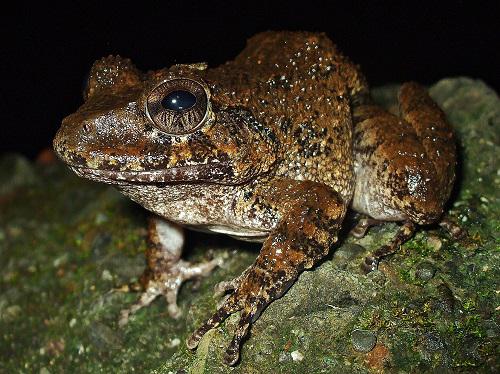Juan G. Abarca A.
To locate more missing frog species in Costa Rica, more populations of the eight re-emerged species,
and re-visit the known re-emerged populations to assess population status and breeding activity.

Isthmohyla rivularis.
Amphibians are the most imperiled group of vertebrates on earth with approximately 43% of the 7,126 described species in decline. Amphibian declines have been linked to numerous factors but the three primary causes are climate change, habitat loss, and disease. Costa Rica has been at the forefront of amphibian decline research where catastrophic and rapid population declines and extinctions were first recognized in the mid-1980s. By 1999 the proximate cause of rapid declines was discovered, the fungal disease chytridiomycosis, but by then 27 species had disappeared in Costa Rica.

Craugastor taurus.
There is a growing impetus to locate missing species because of limitations of ex-situ amphibian conservation efforts due to limited funds and space in zoos. The study of re-emerging missing amphibian species is still young and the significance of re-emergences is not understood. We are focusing our work to streams of the Central Valley and Talamanca Mountains of Costa Rica that historically supported populations of our target species. This work will allow us to update the conservation status for our target species (listed below) and contribute to the growing breadth of knowledge regarding reemerging frog species. This will allow us make informed future research and conservation actions to protect these endangered, re-emerging populations.
Target missing species: Craugastor angelicus (IUCN: Critically Endangered, last seen 1994); C. escoces (IUCN: Extinct, last seen 1986); C. andi (IUCN: Critically Endangered, last seen 1990); Isthmohyla pictipes (IUCN: Endangered, last seen 1994) Atelopus chirripoensis (IUCN: No status, presumed extinct, recently described, last seen 1980) A. senex (IUCN: Critically Endangered, last seen 1988). Recently rediscovered species for this effort: Craugastor fleischmanni (IUCN: Critically Endangered, disappeared 1986, rediscovered 2010); Incilius holdridgei IUCN: Extinct, disappeared 1986, rediscovered 2010); Isthmohyla tica (IUCN Critically Endangered, disappeared 1995, rediscovered 2011)
We will spend 4 nights each at Reserva Cerro Dantas,(1500 – 1900 m elevation), Tapanti National Park (1450 – 2200 m elevation), Cerro Uthyum (1500 – 1900 m elevation), and Volcan Turrialba (900 – 1500 meters elevation). Surveys will be nocturnal. We will slowly walk streams in groups of 2-3 people while visually scanning the vegetation and boulders for frogs. Basic data collected will include: species observed, GPS waypoint, time of observation, number of individuals, body size, sex, habitat, and activity.If we encounter the target species we will not collect them, but instead will use the photo vouchers for identification.